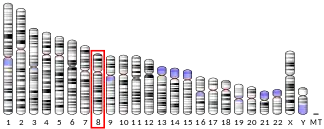| TRIM55 | |||||||||||||||||||||||||||||||||||||||||||||||||||
|---|---|---|---|---|---|---|---|---|---|---|---|---|---|---|---|---|---|---|---|---|---|---|---|---|---|---|---|---|---|---|---|---|---|---|---|---|---|---|---|---|---|---|---|---|---|---|---|---|---|---|---|
| Identifiers | |||||||||||||||||||||||||||||||||||||||||||||||||||
| Aliases | TRIM55, MURF-2, RNF29, muRF2, tripartite motif containing 55 | ||||||||||||||||||||||||||||||||||||||||||||||||||
| External IDs | OMIM: 606469 MGI: 3036269 HomoloGene: 13205 GeneCards: TRIM55 | ||||||||||||||||||||||||||||||||||||||||||||||||||
| |||||||||||||||||||||||||||||||||||||||||||||||||||
| |||||||||||||||||||||||||||||||||||||||||||||||||||
| |||||||||||||||||||||||||||||||||||||||||||||||||||
| |||||||||||||||||||||||||||||||||||||||||||||||||||
| |||||||||||||||||||||||||||||||||||||||||||||||||||
| Wikidata | |||||||||||||||||||||||||||||||||||||||||||||||||||
| |||||||||||||||||||||||||||||||||||||||||||||||||||
Tripartite motif-containing protein 55 is a protein that in humans is encoded by the TRIM55 gene.[5][6]
The protein encoded by this gene contains a RING zinc finger, a motif known to be involved in protein-protein interactions. This protein associates transiently with microtubules, myosin, and titin during muscle sarcomere assembly. It may act as a transient adaptor and plays a regulatory role in the assembly of sarcomeres. Four alternatively spliced transcript variants encoding distinct isoforms have been described.[6]
References
- 1 2 3 GRCh38: Ensembl release 89: ENSG00000147573 - Ensembl, May 2017
- 1 2 3 GRCm38: Ensembl release 89: ENSMUSG00000060913 - Ensembl, May 2017
- ↑ "Human PubMed Reference:". National Center for Biotechnology Information, U.S. National Library of Medicine.
- ↑ "Mouse PubMed Reference:". National Center for Biotechnology Information, U.S. National Library of Medicine.
- ↑ Centner T, Yano J, Kimura E, McElhinny AS, Pelin K, Witt CC, Bang ML, Trombitas K, Granzier H, Gregorio CC, Sorimachi H, Labeit S (Mar 2001). "Identification of muscle specific ring finger proteins as potential regulators of the titin kinase domain". J Mol Biol. 306 (4): 717–26. doi:10.1006/jmbi.2001.4448. PMID 11243782.
- 1 2 "Entrez Gene: TRIM55 tripartite motif-containing 55".
Further reading
- McElhinny AS, Kakinuma K, Sorimachi H, et al. (2002). "Muscle-specific RING finger-1 interacts with titin to regulate sarcomeric M-line and thick filament structure and may have nuclear functions via its interaction with glucocorticoid modulatory element binding protein-1". J. Cell Biol. 157 (1): 125–36. doi:10.1083/jcb.200108089. PMC 2173255. PMID 11927605.
- Pizon V, Iakovenko A, Van Der Ven PF, et al. (2003). "Transient association of titin and myosin with microtubules in nascent myofibrils directed by the MURF2 RING-finger protein". J. Cell Sci. 115 (Pt 23): 4469–82. doi:10.1242/jcs.00131. PMID 12414993. S2CID 16068484.
- Strausberg RL, Feingold EA, Grouse LH, et al. (2003). "Generation and initial analysis of more than 15,000 full-length human and mouse cDNA sequences". Proc. Natl. Acad. Sci. U.S.A. 99 (26): 16899–903. Bibcode:2002PNAS...9916899M. doi:10.1073/pnas.242603899. PMC 139241. PMID 12477932.
- Ota T, Suzuki Y, Nishikawa T, et al. (2004). "Complete sequencing and characterization of 21,243 full-length human cDNAs". Nat. Genet. 36 (1): 40–5. doi:10.1038/ng1285. PMID 14702039.
- Gerhard DS, Wagner L, Feingold EA, et al. (2004). "The status, quality, and expansion of the NIH full-length cDNA project: the Mammalian Gene Collection (MGC)". Genome Res. 14 (10B): 2121–7. doi:10.1101/gr.2596504. PMC 528928. PMID 15489334.
- Kim J, Bhinge AA, Morgan XC, Iyer VR (2005). "Mapping DNA-protein interactions in large genomes by sequence tag analysis of genomic enrichment". Nat. Methods. 2 (1): 47–53. doi:10.1038/nmeth726. PMID 15782160. S2CID 6135437.
- Lange S, Xiang F, Yakovenko A, et al. (2005). "The kinase domain of titin controls muscle gene expression and protein turnover". Science. 308 (5728): 1599–603. CiteSeerX 10.1.1.383.9888. doi:10.1126/science.1110463. PMID 15802564. S2CID 2809403.
- Witt SH, Granzier H, Witt CC, Labeit S (2005). "MURF-1 and MURF-2 target a specific subset of myofibrillar proteins redundantly: towards understanding MURF-dependent muscle ubiquitination". J. Mol. Biol. 350 (4): 713–22. doi:10.1016/j.jmb.2005.05.021. PMID 15967462.
This article is issued from Wikipedia. The text is licensed under Creative Commons - Attribution - Sharealike. Additional terms may apply for the media files.



